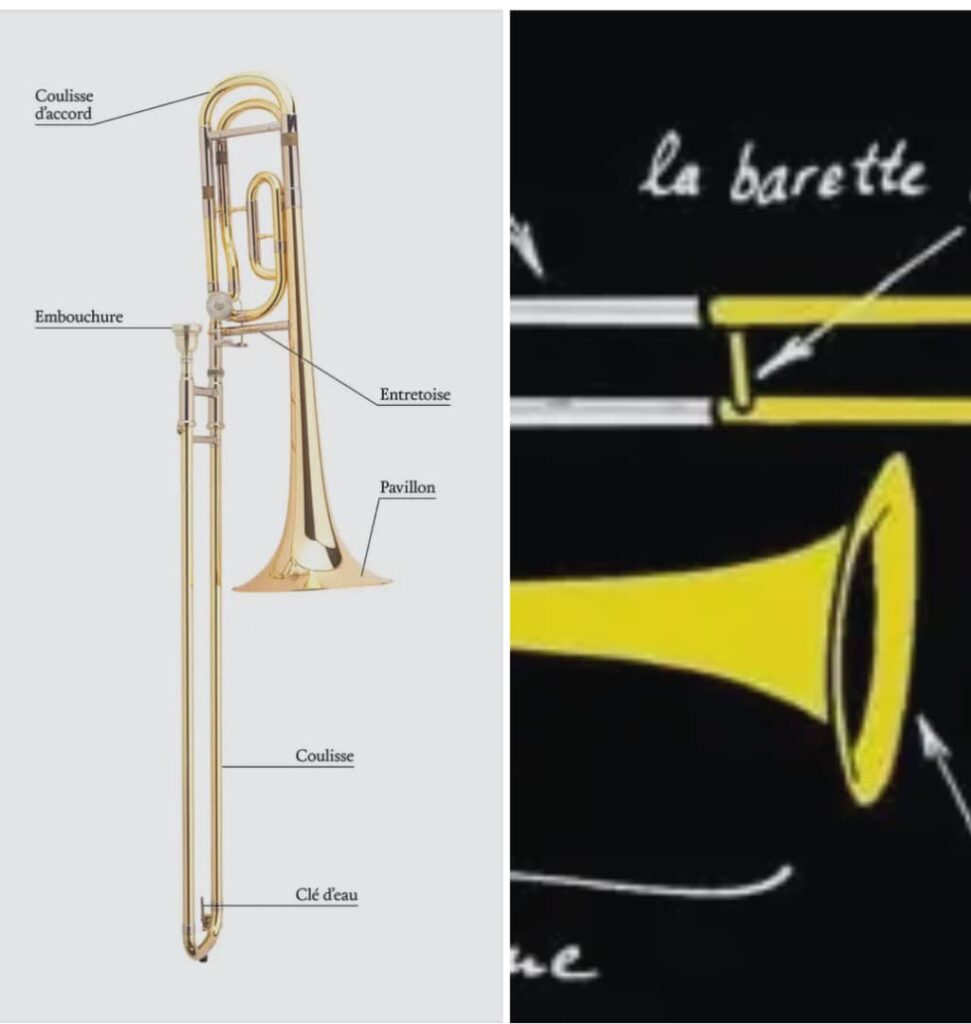The trombone is a wind instrument (or aerophone) in the brass family. The sound is produced by vibrating the lips on a mouthpiece.
The origin of the trombone likely lies in the buccina, a Roman instrument without a slide, played in ancient times. However, the first trombones appeared in the 15th century when someone had the idea to add two sliding tubes to a trumpet (called “tromba” in Italian). The instrument was initially called “sackbut” in French (from the verbs “sacquer” and “bouter,” meaning to pull and push). It has been known as the trombone, its Italian name, since the 17th century.
The trombone is a brass tube made of an alloy of two metals (copper and zinc). It has a golden color but oxidizes over time. It can be coated with a lacquer that isolates and protects it. The tube starts cylindrical and gradually widens into a cone shape at the final section: this is known as a cylindro-conical bore. The speed of sound depends on the air temperature. From 330 meters per second at 0°C, it increases to 350 m/s at 30°C. The pitch of a sound (its frequency) also depends on temperature. Therefore, the instrument needs to be tuned, which means adjusting the length of the air column within the tube to match changing atmospheric conditions. The pitch drops when it’s cold. The tuning slide allows the instrument to be lengthened to maintain the correct pitch.
The Trombone Family
There are six types of trombones: soprano, alto, tenor (the most common model), valve trombone, bass, and contrabass.

The trombone can cover three octaves. The tenor trombone, for example:
Advantages and Disadvantages
The slide allows players to produce all notes and create unique glissando effects. However, it is cumbersome and fragile. The slide must be moved precisely, or the notes will be out of tune. The large movements required by the slide prevent the instrument from being played as quickly as a valve instrument. Instruments in the brass family are usually made from copper-based alloys called brass. Brass alloys have a beautiful yellow “gold” color. They consist of copper (Cu) and zinc (Zn) in varying proportions. Brass alloys are non-magnetic and resist corrosion fairly well, but they can oxidize on the surface, forming a layer of green patina.
